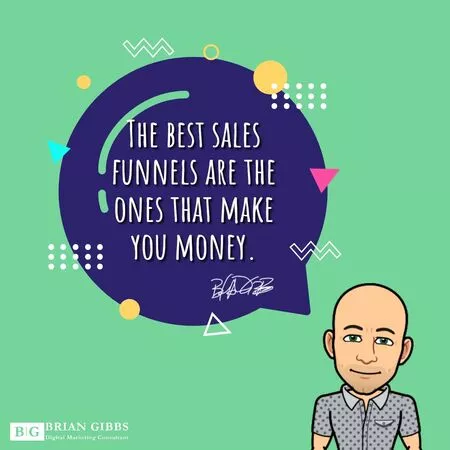From Product to Profit: The Power of the Sales Funnel
Want to Increase Sales? You Need a Sales Funnel!
Sales funnels are essential to marketing because they help you convert prospects into customers. A funnel helps you determine what stage of the buying process people are in and whether they’re ready to buy now or later. Most importantly, it guides them toward making a purchase.
A sales funnel consists of multiple steps leading to one goal. In each stage, there’s something you must offer potential buyers to keep them engaged and interested. For example, when someone visits your site, you want to show them relevant products or information based on their searched keywords. Once they decide to buy, you’ll guide them through checkout and provide shipping options.
You can use different types of funnels depending on what you sell. For instance, you could have a product funnel, a membership funnel, or even a video funnel. Each type of funnel works differently, but most follow similar patterns.

In this article, I’ll explain what sales funnels are, how they work, and give instances of how companies have used them to generate predictable revenue and steady growth.
Why You Need a Sales Funnel to Grow Your Business
There are several reasons why implementing a sales funnel is crucial. For example, a sales funnel can help you:
- Create Customers: The purpose of a sales funnel is to take a company’s target audience and lead them through a series of steps that could ultimately lead to their conversion to customers.
- Generate Referrals: A sales funnel not only attracts a base target population and customer base but also encourages pleased customers to recommend other prospects who might not have previously fit the original target demographic.
- Monitor and Track: A sales funnel helps a business monitor the effectiveness of each stage of the sales process and make necessary adjustments. This ensures that time and sales resources are used effectively. Moving clients through the sales process generates insightful feedback.
- Focus Your Efforts: A sales funnel concentrates the company’s attention on a select group of prospects. As a result, reaching target audience members is simpler and turning them into clients at the bottom of the funnel. By requiring potential consumers to go through various steps that ultimately result in a purchase, a sales funnel can assist organizations in weeding out unqualified prospects. Using content marketing, customer data analytics, and the two-way connection that social media marketing offers, a successful business relies on both sales and marketing to move the consumer through the sales funnel and cultivate customer loyalty.
Four Stages of a Sales Funnel
 To completely address the question “What is a sales funnel?”, we should look at the different steps of the funnel. The sales process and customer touchpoints are typically divided into four distinct stages, though different firms may manage them differently and give them other names.
To completely address the question “What is a sales funnel?”, we should look at the different steps of the funnel. The sales process and customer touchpoints are typically divided into four distinct stages, though different firms may manage them differently and give them other names.
Awareness Stage
Your objective at the Awareness stage is to be transparent. You want to let people know that your business exists. Ask yourself, “What else might I do to ensure people know about my company?”
There are many ways to reach your target customer base and build brand awareness. One of those ways is content marketing. Content marketing is one type of digital marketing where you write articles to inform others about your offer. This helps you gain visibility online and drives traffic to your website.
Content marketing is great because it allows you to give readers value without paying for advertising space on a billboard. Someone who wants to learn more about your business might read one of your blog posts. They can find you on social media sites like Facebook, Twitter, LinkedIn, Instagram, and YouTube. And they could even follow you on Snapchat.
Another way to reach potential clients is through writing articles. These articles can help you rank high in search engines and drive traffic to your site. Many times, visitors who are looking for terms linked to your company will come to your website.
Relationship Stage
The Relationship Stage begins once you’ve built up enough interest for people to make a purchase. You’re no longer just trying to sell products; now, you’re working toward developing a long-term relationship with customers.
After someone becomes aware of your brand, they are interested enough to learn more about you. They might even decide to buy something from you. But once they know you, you want to continue building a relationship with them to increase sales. You can do this by asking questions, providing helpful information, offering discounts, and being responsive to customer needs.
Things start to become intriguing at this point. Knowing your target market can help you figure out the best way to approach them. And you’ll need to think of strategies to keep them interested, so they don’t forget about you.
Sales Stage
After your prospects have gone through the Relationship Stage, send them on to the Sales Stage so you can finalize the sale. At this point, consider the best method for getting them to pay.
Selling should be simple if your Relationship Stage is well-designed. Your client will be eager to purchase your goods or services.
Still, having a strong Sales Stage will help boost your performance.
For a high-end conference, the sales stage might include a landing page with a video and a list of noteworthy speakers. It might also mention extra advantages, including networking with other successful people.
Using urgency or scarcity to encourage buying is another strategy for improving sales success. If you did a good job developing trust and authority in the relationship stage, or if you employ a relationship funnel for your business rather than a sales funnel, scarcity is optional.
Don’t try to trick people into buying by creating a false sense of scarcity. Customers can sense it, making them less likely to trust you.
A sense of urgency is noted to boost sales by 6% to 9%.
Source: Mailmunch
Upsell Stage
The Upsell Stage is where companies can make more money by offering additional related products or services. This stage occurs after the initial purchase has been completed. Think of it as a second chance to sell something to someone who just bought something from you.
McDonald’s grew into a multi-billion dollar company by asking customers, “Would you care for some fries with that?” after purchasing a hamburger. They didn’t ask for anything extra because they already had a full meal. But they knew that many people wanted to eat French fries. So they asked. And now we know how successful that strategy was.
Aside from generating more revenue, upselling can also enhance the customer experience. You will likely retain and attract new customers by providing better value.
Some people buying tickets to your live event might be willing and even eager to pay more to consult directly with you. You can offer them one-on-one coaching sessions or consulting opportunities. If you do this well enough, they might buy more from you later.
Consider what other products or services your customers might want when designing your upsells. Can you upsell a product or service that helps them even more? For example, if you are selling tickets to a concert, you could add a VIP package that includes backstage passes, special seating, and access to meet the performers.
Consider the Number of Touchpoints
 Some funnels require a lengthy process to entice consumers to participate. While a business selling bone broth might only need two or three well-targeted advertisements to make the sale, car dealerships, for instance, may require years-long sales funnels to bring customers into the store and ready to buy.
Some funnels require a lengthy process to entice consumers to participate. While a business selling bone broth might only need two or three well-targeted advertisements to make the sale, car dealerships, for instance, may require years-long sales funnels to bring customers into the store and ready to buy.
Many funnels emphasize brand awareness instead of presenting a reason to convert, like a discount, sale, intro package, or something else. If an offer doesn’t happen early enough, viewers will likely lose interest and move on.
In the same way, make sure you take the necessary measures to convince customers to use your expensive, high-value product or service. For instance, a college attempting to attract graduate students would gain more from lead ads or Messenger ads than from dropping them off at an application page immediately.
Finding the ideal number of campaigns within the funnel will probably require some testing, but keeping your campaigns current and engaging will help you get there.
About 67% of consumers said they would most likely engage with discounts or offers.
Source: sproutsocial.com
How are Sales Funnels Changing?
According to Michael Bosworth, author and speaker, the changing nature of marketing and sales require sales professionals to adapt. In his book “Solution Selling,” he writes that sales used to be about persuasion, overcoming resistance, handling objection, and closing deals. Today, he says, it’s about helping people accomplish goals, solve problems, or meet needs.
Email, social media, and online interactions are preferred by most consumers today. And while some sales still require face-to-face meetings, such as those involving high-value transactions like large purchases, many sales involve conversations over email, phone calls, or video chats.
Sales processes themselves are also evolving. Historically, salespeople had to rely on intuition to determine how best to approach each prospect. But now, sales leaders are looking to data analytics and predictive modeling to help identify the best way to reach customers. They’re also relying less on salespeople to decide what to do next. Instead, they’re asking sales teams to analyze information and provide recommendations.
And finally, there’s a shift away from traditional sales models. Sales professionals are no longer expected to sell products or services but to help customers find solutions. This change occurs because customers increasingly prefer to work with companies that understand their needs and wants.
78% of business buyers seek salespeople who act as trusted advisors with knowledge of their needs and industry.
Source: salesforce.com
In Conclusion
You need a sales funnel if you want to turn your website into a selling machine. To be more relevant and appealing to your audience, funnels must be created expressly for your avatar. When appropriately applied, the sales funnel can generate demand for your product from a market that wasn’t even looking while simultaneously capturing the curiosity of people who are already interested in your product.

